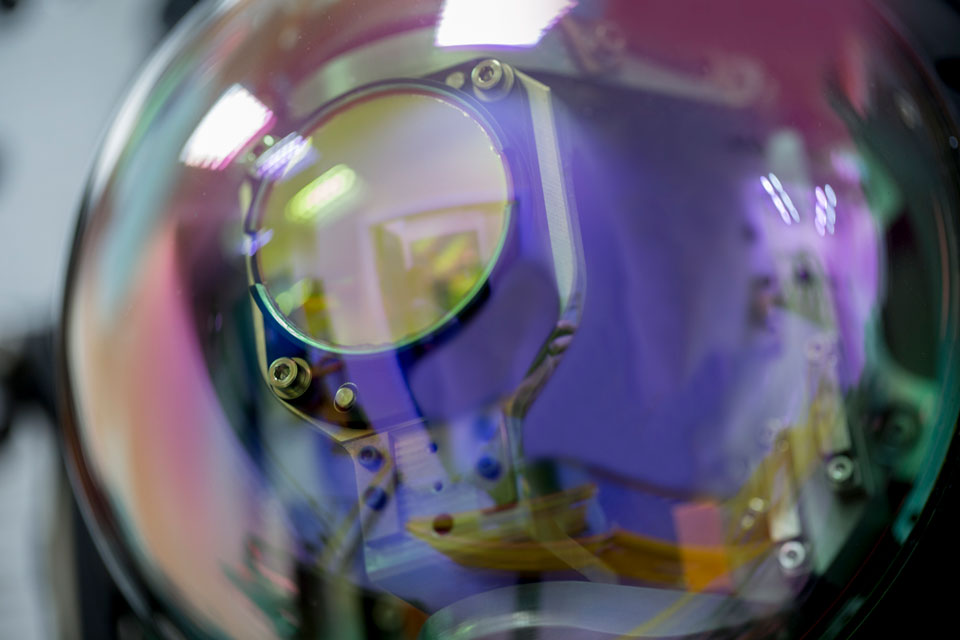There are two scenarios where the route to adding a DIRCM to an aircraft will differ; fitting to a brand new aircraft at point of, or immediately after, manufacture or to an aircraft that already has some form of self-protection system fitted. In either case, the threat posed by prolific IR MANPAD systems is growing in sophistication meaning that traditional flare solutions are increasingly ineffective and, importantly, are of limited quantity and so DIRCM has fast become a ‘must-have’ when operating in IR MANPAD threat environments.
New Aircraft
Fitting Miysis to new aircraft has predominantly been for VVIP customers and fitted to platforms such as the Bombardier Global 7500 and AW139 helicopter. We work closely with the customer to identify the most appropriate coverage and then the Original Equipment Manufacturer (OEM) or integrator on the installation, often referred to as federated, or standalone, system. This means that the DIRCM and the Missile Warning System (MWS) communicate directly with each other and are not part of the aircraft systems. DIRCM system feedback is relayed to the aircrew via the Miysis Control Interface Unit.
Aircraft with existing defensive aid suites
When working with customers who may have a fleet of aircraft requiring a DIRCM upgrade, understanding how that current integration works from a systematic point of view and what equipment is currently installed is the first step we look at. Miysis DIRCM is a next-generation, powerful, highly agile and accurate DIRCM system and so needs certain data to operate.
Often a military aircraft’s Defensive Aids Suite (DAS) is controlled or moderated by some form of controller, such as Leonardo’s MAPPS product. This controller acts as a ‘brain’ to all the various sensors and effectors that might be part of that DAS and ties it all together into an Integrated Defensive Aids Suite (IDAS).

Becoming part of your defensive aids suite
Whether being fitted to a new aircraft or a modification to an existing aircraft, there are similarities to a range of questions.
Miysis DIRCM can work with any pre-existing DIRCM-capable Missile Warning or Threat Warning Sensor (MWS/TWS). We have currently integrated with seven different MWS/TWS including Leonardo’s own Multiple Aperture InfraRed system (MAIR).
Leonardo works with each customer and their current MWS system to identify whether it is suitable and, if not, works through the various options available. If already suitable, there is no reason to replace the MWS/TWS, therefore saving on both hardware and installation costs.
A federated, or standalone, system means that the DIRCM and the MWS/TWS communicate directly with each other and are not part of the aircraft systems with basic system feedback relayed to the aircrew via a Control Interface Unit. This provides customers with a far reduced installation and certification programme and is very popular with our VVIP customers, who may not have any other self-protection system fitted.
The second option would be installation as part of an Integrated DAS (IDAS) where the sensors (MWS/TWS) and Miysis DIRCM effecters are routed through a controller that feeds into the broader aircraft defensive aids and/or mission system. Either option provides the enhancement of the self-protection system desired and is an area we work through with each customer to find the right solution for them.
There is no single answer to this question. With the benefit of having a single product small enough to fit on a large UAV but with the power to protect the largest of passenger aircraft the optimal solution is worked out in detail with each customer. For ultimate protection against multiple simultaneous threats, we would always recommend a twin or triple effecter solution however, we also understand that aircraft size and available power, or simply budget, may result in a single effecter solution being required. We fully understand however sometimes you have no choice but to compromise and we work closely with the customer and modifier to find the appropriate balance between coverage, installation practicality and cost.

